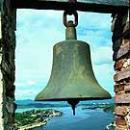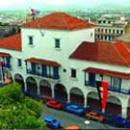I’ll be back to Santiago
Santiago de Cuba is different and always the same with a luring combination of history, culture and tradition, the city housing the Virgin of Charity –the island nation's patroness saint- and blessed with a magnificent bay, architecture and a street ambiance that makes it so unique.
This is no doubt an intimate and hospitable destination. Visitors melt into its bustling squares, museums and marketplaces. At the end of a long trip, travelers notice all the valuable things Santiago is praised for.
A peerless city that has no match, built to the shape of its hillsides, featuring a mesh of roads and avenues that fork at the curves and resting like a shroud over its mountainous landscape.
Poets and intelligentsia people have sung their songs to the city, like Grenada's bard Federico Garcia Lorca when he wrote: When the full moon comes shining through / I'll go to Santiago de Cuba / riding a carriage of black waters / I'll go to Santiago de Cuba. And Spanish scholar Francisco Prat Puig who described it as “a cavalry city riding on many horsebacks.”
The heart of Santiago de Cuba beats and throbs in Cespedes Square showcasing the burg's oldest buildings like the cathedral, the oldest house in the Americas that belonged to Governor Diego Velazquez and where Fidel Castro spoke to the Cuban people for the first time ever after the triumph of the Revolution. Stores, money exchange houses, banks and institutions whose facades overlook Cespedes Square and give a people's touch to the surrounding environment also stand tall.
The sweltering sun beats down and calls for light clothing and fresh fruits close at hand in outdoor eateries on every corner: bananas, pineapples, crimson mammies and many more as if you'd like to dip into the very juice of Santiago.
Swaying in exaggerations.
Exaggerations used to describe the city suit anybody to the ground. There are Egyptian and Peruvian mummies in the Bacardi Museum. Major ruins of coffee plantations established by French-Haitian settlers and the Morro Castle –monuments labeled as Heritage of Mankind by UNESCO- are preserved
At the Baconao Great Nature Park, the Sculpture Meadows and the Jurassic-style Valley of Pre-history meet the eye. There are horses from all times, pachyderms and giant birds carved in limestone.
There's a seaquarium down the Baconao road featuring shows starred by trained marine species; and the coastline is dotted by beaches while the Baconao Lagoon is hedged with mountains.
Gran Piedra (The Grand Rock) is one of its wonders, registered in the Guinness Book of World Records as the planet's highest stone with more than 1,200 meters above sea level and a weight of 70,000. The Rock shows off a watchtower perched on top of it that overlooks the Caribbean Sea and the Sierra Maestra mountain range.
Thousands of people swarm the village of El Cobre and crowd the basilica named after the site where high on an altar stands the Virgin of Charity –crowned by Pope John Paul II during his visit to the island nation in 1998. The Sanctuary, the Virgin of Charity, the outdoor copper mine –the oldest in the Americas- the Slave Trail opened by UNESCO and Cuba's Monument to the Runaway Slave are dear to this community.
Going back to the citadel aspects of Cuba's former capital and traipsing into the Santa Ifigenia Cemetery, travelers can take a look at the Jose Marti Monument, outfitted with supporting arches that let sunlight in to bask the sculpture's forehead all day long, exactly the way the National Hero asked for in his verses: “I'll die with my face to the sun.”
Culture, music and a whole lot more
There are 28 museums and cultural institutions in Santiago de Cuba: The House of Traditions, the House of Troubadours, the House of Music, the Caribbean House, Heredia's Birthplace House, Compay Segundo's Place, let alone the Caribbean Festival or the Celebration of Fire, carnivals and the annual ExpoCaribe Fair.
Santiago's musical tradition harks back to the very dawn of time with guitars, guiros and bongos from Sindo Garay, Pepe Sanchez, Matamoros and Los Compadres to today's singers like Eliades Ochoa, Francisco Repilado, world-known Compay Segundo and Buena Vista Social Club's Ibrahim Ferrer, crooners all whose music has made the whole wide world trip the light fantastic.
To both listen to and dance to this great music, Santiago de Cuba is packed with such spots as the House of Troubadours staging concerts nearly every single day, and the Casa Granda Hotel, the ARTEX Patio or the Grandpas' Backyard.
A flair for music and a graceful gait give santiagueros away. They are gleeful-partying people with great awareness of what homeland is all about. Yet you've got to be there to feel this human touch.
Heroic city, holy city, musical city, rebel city, hospitable city, troubadour-like city with its Golden Apple, its fortresses and its sweeter-than-sweet nooks and crannies. I'll be back to Santiago riding on other wings.






































































